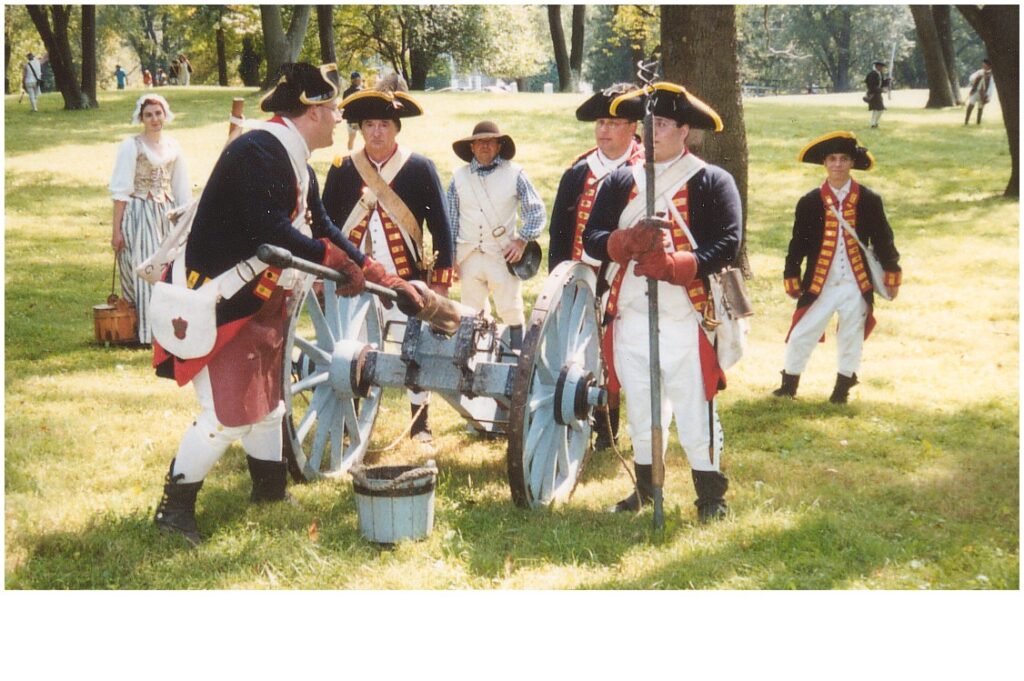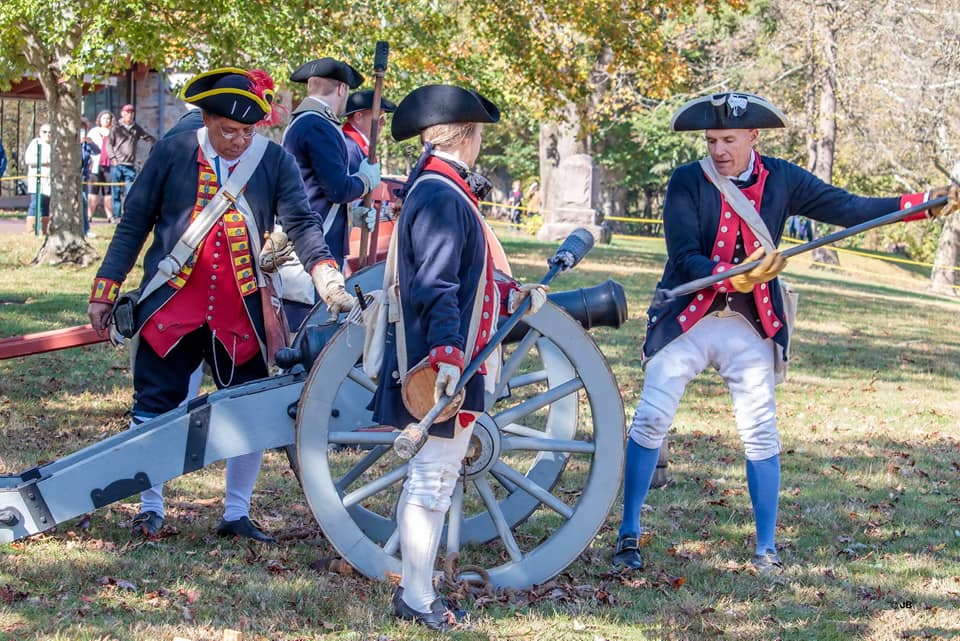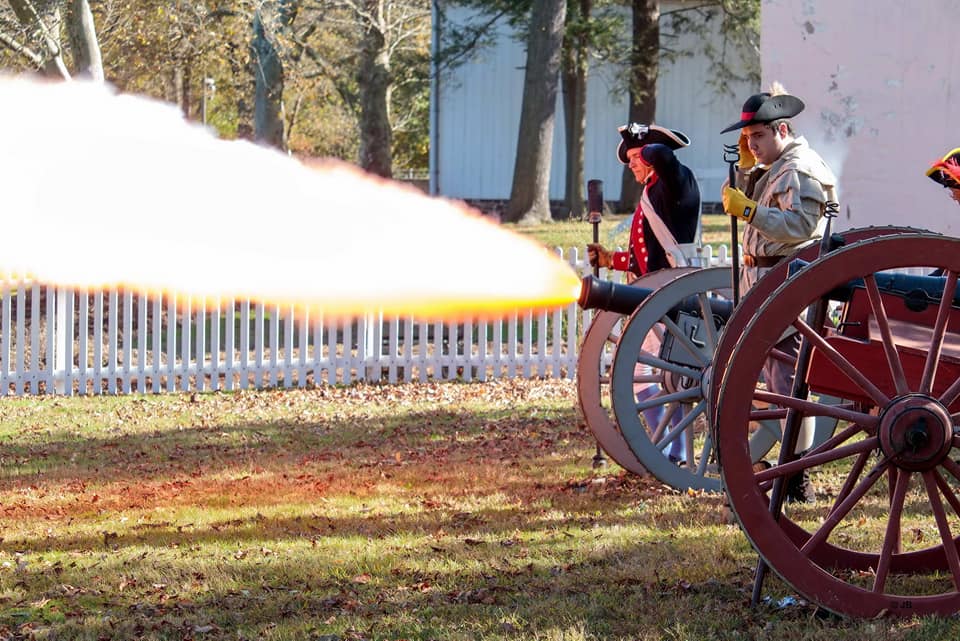Edward Hector is listed in the “Pennsylvania Archive” book as a bombardier. A bombardier is a soldier with the artillery that is capable of operating in the rear positions of the cannon. A cannon could be manned by as many as 15 soldiers and as few as 3. Five to seven could operate the cannon, the rest would defend it. The positions would vary from army to army, but in general would be like the following:




The five uniformed soldiers (for identification purposes, 1 to 5 going from left to right) had the following functions when the cannon was fired: (Not seen here is an officer who would issue the commands and the soldier manning the powder box.)
Did you notice the man and woman dressed in civilian (non-military) clothing? The man, like Ned, could be a teamster or wagoneer (wagon driver). Ned, being a soldier (bombardier), could step into position #2, #3, or man the powder box if they were killed or wounded. The woman could be like Molly Pitcher, bringing water to the cannon. There were a couple Molly Pitchers. The well known Molly Pitcher from the Battle of Monmouth was married to Private Hays, one of Ned’s fellow Artillerymen with Proctor’s Third Pennsylvania Artillery. Her name was Mary Hays. “Molly” is a nickname for Mary.
• #5 – the powder monkey – would run to a spot about 30 yards behind the cannon where the bags filled with gun powder would be. (Why 30 yards? Would you want to be next to this gunpowder when a lucky enemy’s shot struck and ignited it?) He would grab a charge (bag) and carry it to #4. • #4 would receive it behind his back, and then put the charge in the cannon’s barrel. • #1 would ram (push) it completely down the barrel. • By now #5 would have given a cannonball to #4 who would place it in the barrel. • #1 would ram it snuggly against the gunpowder. • #2 would use a long thin spike through the touch hole at the top rear of the cannon to puncture the gunpowder bag inside. • #2 then would prime (fill the hole with gunpowder) the touch hole. • #3, who has been holding a slowly burning piece of rope on the end of a pole, upon hearing the command to fire would touch the glowing end of the rope to the gunpowder and the cannon would fire. • #4 would take the other end of the ram, which would have spiral shaped fingers on it called a wormer (he’s presently holding one), and “search” the barrel to make sure the barrel is clear of any obstructions. • #1 then dips the swab or sponge into water and pushes it into the cannon to put out any burning embers that still may be in the barrel. (Who wants to put gunpowder into a barrel with red hot embers? Not I!) • #2 has his thumb over the touch hole. When the sponge is removed a pop is caused by the vacuum created by not allowing air in through the touch hole. The heat of the barrel evaporates the water or sometime a swab (a piece of dry cloth or wool on a stick) is used to dry it. • Now we’re ready for another volley (shot).


Above, a British 16-pounder, circa 1775, illustrating the different parts. Below, a cut-away view of the same gun. For those who like technical terms, the rearmost protrusion is called a “Cascabel,” used for attaching ropes to hoist the gun in transit. The barrel, as we would call it, was known as the “Chase.” The touch hole would be in the center of the heraldic design which is just forward of the Base Ring. For obvious (I hope) reasons, guns were “preponderated,” meaning that the breech area around the powder chamber contained much more metal than the rest of the gun. This also helped in aiming, as it caused the gun to sit more solidly on the quoins used for elevation..





